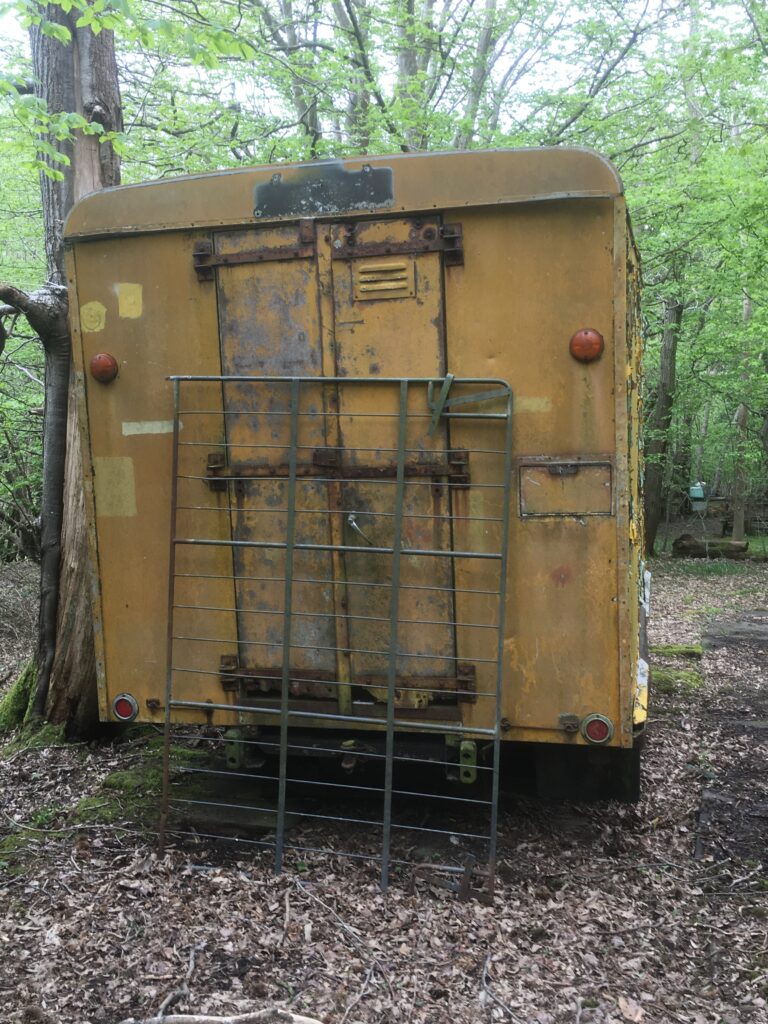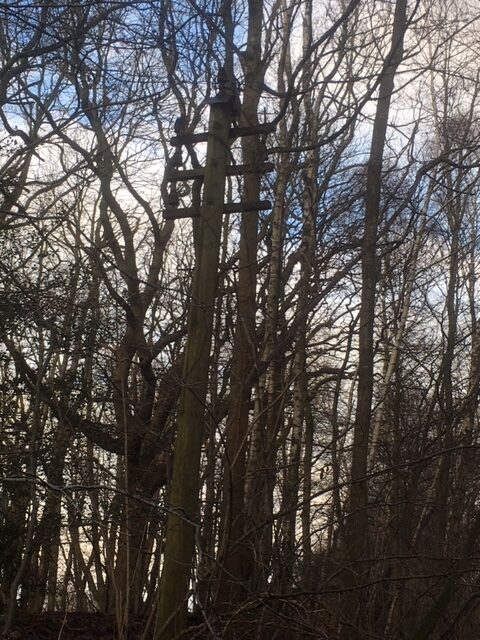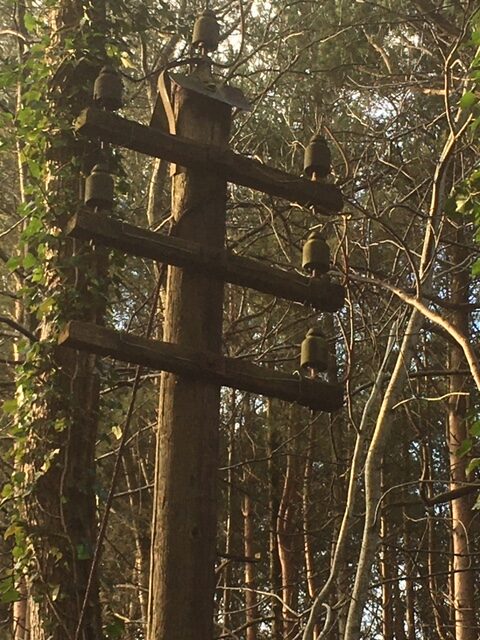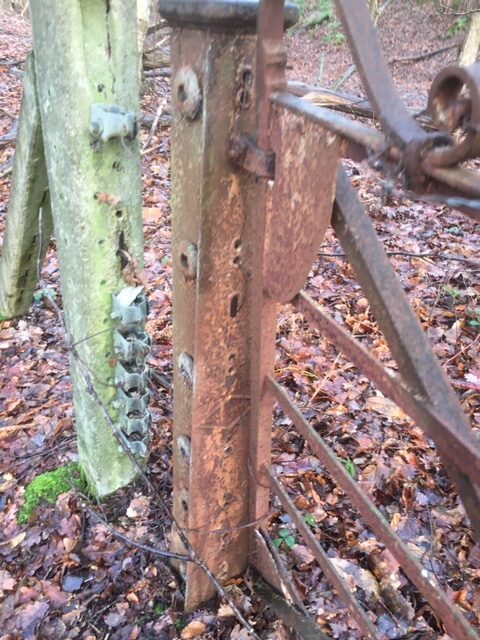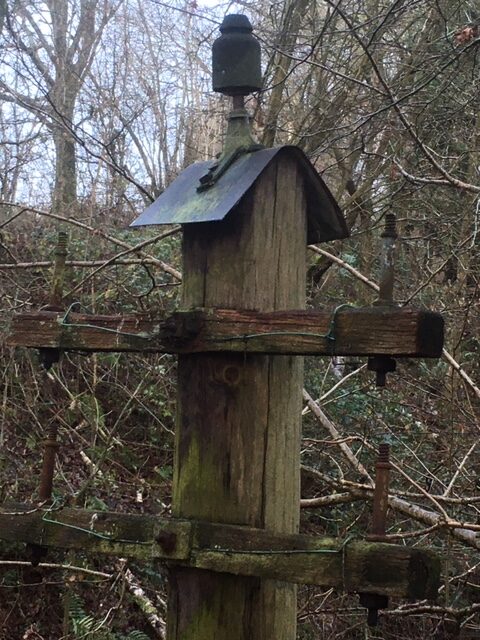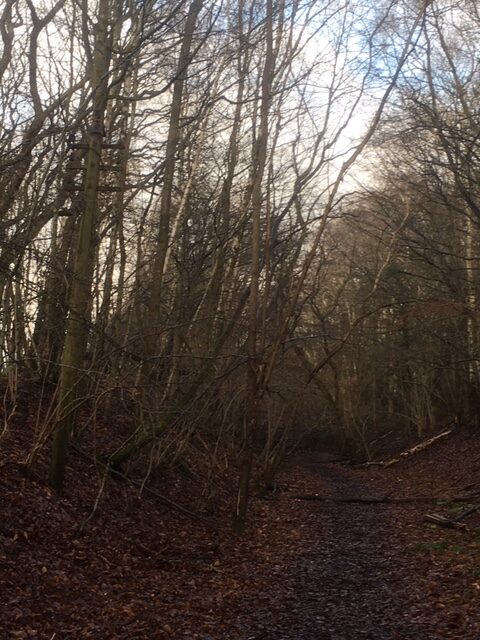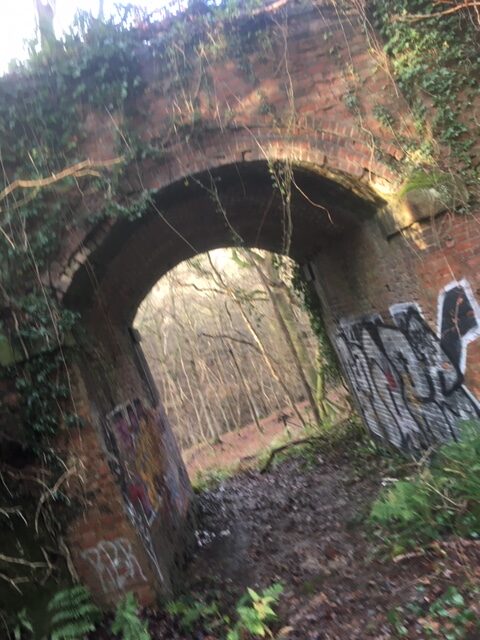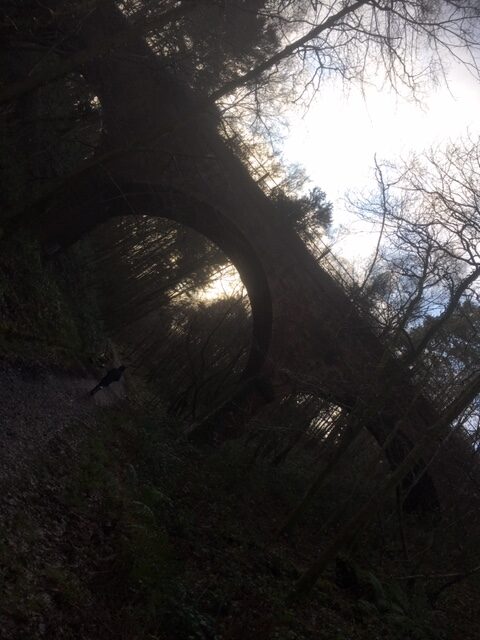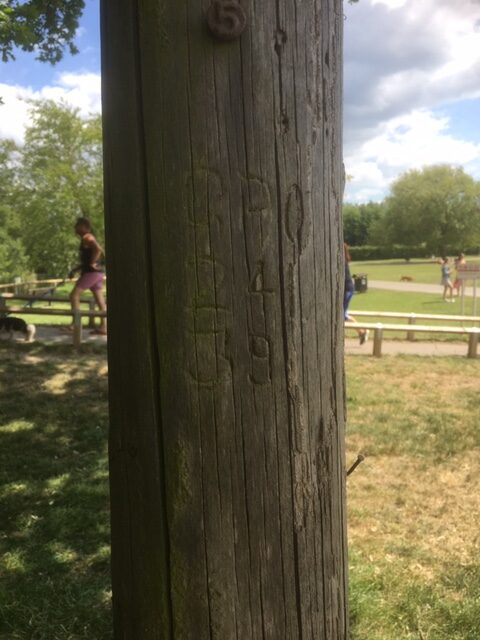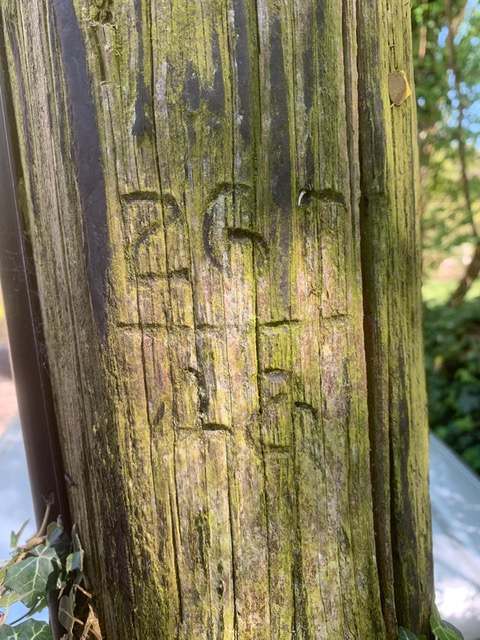Albert Einstein’s Special relativity indicates that a correspondent may experience relativistic time dilation when expecting the email and photographs they sent to be published within the same inertial frame of reference from the recipient’s standpoint. Or something.
This is the only way to explain the near three years that have elapsed since Matt Brown’s email(s) and photographs were transmitted to the TPAS HQ inbox. And, hand on heart, I’m not sure I even understood that first paragraph.
Matt and his family are regulars exploring ye Olde Cuckoo Line (click to see previous article on subject). Matt is also a car restorer and is rebuilding a GPO Morris van. Now, the photographs you see below are from a series of emails and so I will summarise them here. Most are serendipitous finds along said disused railway line and nearby woods down there in East Sussex. They are hunting for telegraphic artefacts for the making of their very own pre-1960’s garden pole. The yellow truck you see is a forest find GPO truck as once used by TV detectors et al. Other gems in these pics: An undated pole with a star shaped cut out where the date might be, A GPO crown transfer (presumably for the van restoration), a selection of spooky tunnels, culverts and iron railings and a couple of restored Morris van panels.
Not the best photographs in the world., arguably. And camera not in the steadiest hand in the world. With Dutch angles particularly on the tunnel shots. And arguably, not the highest resolution camera in the world. But we enthusiasts can find interest in pretty much anything. Thank you Matt. I imagine you must have finished that van by now.



